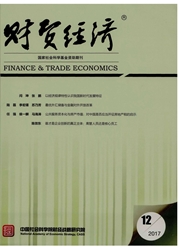

 中文摘要:
中文摘要:
企业环境资源和财务资源承担着价值创造功能,而出口模式的选择是价值实现方式。本文从独立因素和协同效应两方面分析了企业生态效率、融资约束与出口模式选择的价值创造机理,并以2013年世界银行公布的中国制造企业调查数据为样本进行了实证检验。研究发现,制造业出口企业的生态效率越高或者融资约束程度越低则越倾向于选择直接出口模式,反之则越倾向于间接出口模式。进一步地,企业生态效率与融资约束程度协同作用时对直接出口模式倾向的贡献大于它们各自发挥作用时的贡献之和,且良性协同性越强则这种协同效应越大;较高的生态效率与各种融资约束水平的协同效应随着融资约束由低到高而反向变化;如果生态效率较低,则不论融资约束如何,企业都更倾向于间接出口。这意味着,企业环境资源和财务资源的良性协同能够创造更高的价值,其中生态效率起到关键作用。因此,中国政府的出口政策应充分考虑企业的三种出口模式,并将支持企业的融资政策与其生态效率相结合,促进国际化战略及其价值实现。
 英文摘要:
英文摘要:
Enterprise's environmental and financing export modes selection is the means by which the resources bear the function of value creation, and value is realized. In this paper, the value creation mechanisms of corporate environmental, financing constraints and the export modes selection are analyzed from two perspectives of independent factors and synergistic effect respectively, and are tested empirically using the Chinese enterprises survey data released by the World Bank in 2013 in which export modes are classified as indirect, mixed and direct export. The result shows that when eco-efficiency is higher or finance constraint is lower, the industrial enterprises are more likely to choose direct export mode, if not, they are more inclined to use indirect export mode. Further study finds that the synergistic effect of enterprise eco-efficieney and financing constraints is larger than their total respective contributions to the tendency of direct export mode. There is a negative relationship between the synergistic effect of higher eco-efficiency and various levels of financing constraints and financing constraints. When eco-efficiency is lower, the industrial enterprises are more likely to export indirectly regardless of financing constraints. This means that positive synergy between corporate environmental and financial resources can create more values in which eco-efficiency plays a key role. The results suggest that in order to promote the enterprises' international strategy and their value creation, China government should take full account of the three export modes in forming export policy and combine loose financing policy with eco-efficiency level of private enterprises closely.
 同期刊论文项目
同期刊论文项目
 同项目期刊论文
同项目期刊论文
 期刊信息
期刊信息
